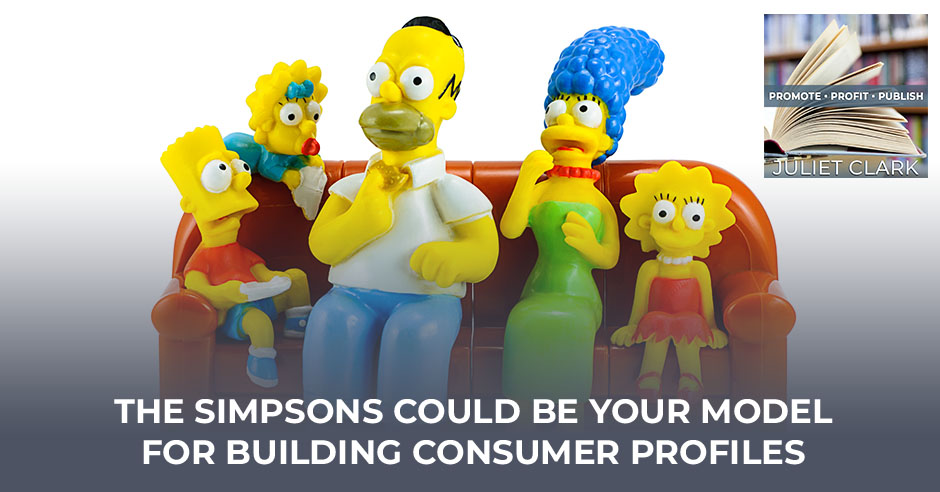
The Simpson Family is one of the longest-running TV shows. The Simpsons could be your model for building consumer profiles. In this episode, Sage Polaris, an international speaker in exclusive private Masterminds, identifies the four buyer types and the value of building consumer profiles to sell. Being aware of the Homers, Marges, Barts, and Lisas in the market will allow you to position your product to become sellable in your target market. Sage also delves into Artificial Intelligence and calls ChatGPT a HotSpicy Auto-Correct. Although Sage shares so many insights in this episode, she also shares a free gift you shouldn’t miss! Tune in to this episode so you are not only storytelling, but you are also story selling.
—
Watch the episode here
Listen to the podcast here
The Simpsons Could Be Your Model For Building Consumer Profiles
I’m excited about our guest for this episode. Sage Polaris, one of my buddies from The Dames, is going to be talking about four buyer types, digging deep into helping you understand your buyer. We do all of this work to market ourselves but when we go to sell products and services, we have to understand what motivates our buyers to buy. We’ve seen a lot in the news about companies that have tried something new that necessarily doesn’t hit their target market and how drastically that can backfire with your sales. I’m excited about that.
Before we get started, I want you to go check out my new book, The Author Success Handbook. I’m excited about sharing this with all of you guys because it is the key to building an author platform the right way. Also, understanding your buyers is part of that. You’ll see a section in the book that talks a little bit about that and recommends another book.
A little bit about Sage. Sage Polaris has written high-converting copy for more than 475 clients, earning them millions of dollars. She helps personal brands and service providers sell more of their service or offer with the words on their website. Her email sales pages are responsible for generating as many as seven figures in a single launch.
She’s worked with Chalene Johnson, Chrisette Michele, Rick Mulready, and Lynne Twist. She makes money for the internet-famous people that we all look up to. In turn, she’s also been an international speaker in exclusive private masterminds. She can show your audience how to go from storytelling to story-selling. This is what truly makes a brand legendary. Stay tuned. Sage is next.
—
Sage, welcome. I’m excited to talk to you. My people need you so badly.
I appreciate you having me and opening up your circle, Juliet.
Thank you. I told everybody in the intro you’re part of The Dames. We’re such a great group that many of us that are on the show belong to. I’m excited that you’ve joined us as part of that. For those of you who are reading, Sage is going to talk about the four buyer types. When you have gone through my new book, The Author Success Handbook, and for those of you who’ve gone through Author Traffic School, you know that we start with building your author avatar, which is all those demographics, psychographics, and media. We’re doing market research.
What Sage is going to talk about is so important because you need to know what motivates your people to buy. It’s one thing to build that avatar and say, “Those are my people,” but it’s quite another to sell to those people. Sage and I agreed we talk a little bit about the disasters we’d see going on in the marketplace with a couple of big visible companies that have not honored their target market. The first one would be Bud Light. Last I looked, they’ve lost $29 billion in sales. They’re laying off people because they did something that offended their target market. They tried something new. What are your thoughts on that? These mistakes can cost you big money.
You have to be aware of your values and also the values of your audience. Make sure there’s not a misalignment there. If you’re going to say something that will offend them, then you need to also know how to manage that on the backend and how to genuinely apologize to your audience and do better because they’re going to watch and pay attention. Not forever. I’m being honest here. At some point, they will bounce back from this because of the size of their reach. They’ll be able to figure it out. It’s interesting. I’ve seen this happen to a lot of brands. They’re not the first brand to misstep.
First of all, when you have a smaller audience, it’s okay to have these missteps because you’ll be able to recover quickly and more easily. Versus, when you have a huge audience like this and the spotlight’s on you, they have crisis management, people who come in and help them fix this problem. Over time, they’ll be able to recover but I’m sorry to hear about those layoffs. That’s devastating. The biggest thing to keep in mind as you grow your brand and get a bigger audience is that the choices you make don’t impact you.
The choices you make impact more than a few people and you. Be conscious of that and create a business that’s aligned with your values. Do not stray away from that. People respect and admire you so much. It’s not that we don’t ever make mistakes. I’ve certainly made mistakes in my business but how you take action on those mistakes after you apologize is what people are watching.
There were some big mistakes there. They’ve never apologized to their core audience. They put together some patronizing ads that are not enough. I wanted to lead in with that because you’re right. With small businesses, it’s not so devastating. You don’t have the news media talking about it all the time like you do with others but you do have to know what motivates those people to buy and not offend them in some way. People are so easily offended. It’s hard with everything.
There’s a fine line. We’re going to talk about these four buyer types. Maybe I should get into it because it relates directly to what we’re talking about. I like looking at this through the filter of The Simpsons, which is a TV show. It’s the longest-running TV show that I know of. It’s been going on for multiple decades. When I saw those characters and their relatability of them, that show is also not perfect.
There are things that are problematic but that’s another conversation for another day. There are four main characters there. When I saw that, I was like, “They represent the relatability of this show for sure but also the way they make decisions relates to how people make buying decisions in the market.” I bridged the gap between those two.
The Simpsons make decisions related to how people make buying decisions in the market. Share on XWith the four characters, I was thinking of Homer. There are these four buyer types and he represents the fun-loving decision-maker. When he’s reading your copy or marketing materials, he’s looking to see if you’re fun. An example is on my website on SagePolaris.com. I swear to you, many people have said this to me. When you go on the homepage, there’s a picture of me with a pen balanced on my nose. I have people be like, “That’s why I hired you because I could tell you were fun.”
They’re the homers of the world. They’re the fun-loving decision-maker. They’re like, “She looks like a party. I want to play with her.” It wasn’t the only decision. There were other things and I’ll get into the other three characters but that stood out to them. I’ll get on a private client call and their husband will come into the background of the Zoom. They’re balancing a pen on their nose. It takes me a minute to get it. I’m like, “Right. Yes.” I can do it. It’s a skill.
That doesn’t work. I guess I’m not hirable.
It lights you up. It makes it feel fun and playful. That’s the point of it. Your words matter. In terms of copywriting, not the legal kind, the marketing term, that’s what I help my clients with. Also, having fun, funny images, puns, music lyrics, or GIFs in your emails, or when you’re writing your sales page. Whatever it is you’re working on, it attracts that particular buyer type and that fun-loving decision-maker. That’s something that right away you could implement but it’s a fine line.
Going back to what we were talking about, being fun and funny sometimes can cross a boundary for people where they’re like, “That’s not funny to me anymore. That’s something else. That’s hate speech.” Understanding your audience and what kind of humor they get and enjoy is another thing to consider when you’re writing your copy. There’s that fine line. You got to dance about what you’re willing to say and how you’re going to portray your business.
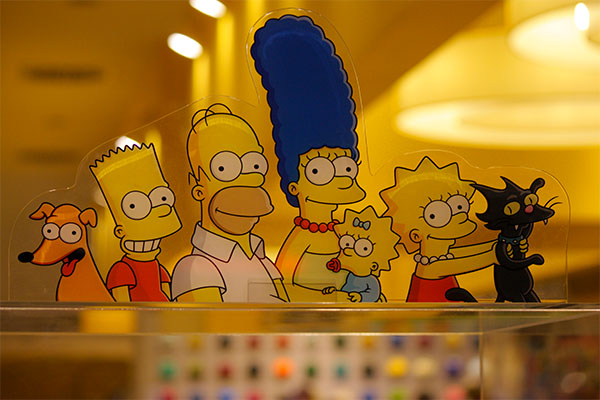
Building Consumer Profiles: When writing copy, you must dance about what you’re willing to say and how you will portray your business.
The only thing I would say for you to be mindful of is that a lot of people come from the corporate space. Things are pretty buttoned up in the corporate space. People think they can’t show their personality if they’re coming from that space and then they have a personal brand. They’re an author and they want to get to know who you are as a person.
Instead, you’re only wanting to do corporate speak which is very formal and buttoned up. There’s no room to do that funny, fun-loving stuff. When you have a personal brand, those people want to know that part of your personality. They want to know what’s humorous to you. Those are some things to keep in mind. Do you at all identify with being a fun-loving decision-maker? I got three others for you if you don’t identify with them.
It depends on the day to be too fun-loving but I am the decision-maker, sort of the boss. I make decisions quickly. That is one of the things with fun-loving. Would you agree with that? Those are people who see it, know what they want, and do it.
No, that’s a separate buyer type. Let’s get into it. I’m so glad you said that. It’s a perfect segue. The fun-loving decision-makers like to be wooed a little bit. They are the ones who are a bit last minute. They’re always late to the party but you’re so glad they’re there because they’re having such a good time. For them, when I’m doing an email campaign for a client, let’s say, we’ll do up to twenty emails.
The fun-loving decision-makers are like, “I don’t know what I’m getting into but I’m buying on the very last day of the offer before it closes.” The things to keep in mind though about these four buyer types as I go through them is we all have all four in us. You’re right. It depends not always on the day. Some days you are feeling sillier for sure. It depends more on the price point and how aware they are of the problem. There are other factors that go into how they make that buying decision.
I love the word you used, awareness. Many people I see out there probably come to you and say, ” I want this bombing campaign,” but nobody knows who they are. They need that awareness piece first. I’m glad you said that because a great campaign is not going to do you any good if nobody knows you’re alive.
It’s like brand equity with people for them. There are ways, even if you’re brand new on the market, to get people quickly familiar with you and build that brand equity quickly. Every business is a little bit different in terms of what assets can make them feel instantly connected to their audience even if they’re brand new to the game. Certain things might be available to them. I’ll give you a quick example.
One of my clients is Lynne Twist from Soul of Money. When we first started working together, she had established herself in speaking on stage. She was well-known in that circuit and she’s been doing her work for four decades. She has the experience and the expertise in all of these things but in the online space, people hadn’t seen her around. She had mostly focused on in-person spaces to sell.
We worked together for about 3 years and developed about 5 or 6 digital products for her. That’s a perfect example of an author who came to me and didn’t know how to build those relationships in the online space that she had built so well somewhere else. She had been on Oprah and had testimonials from Jane Goodall. We put that in key places in her campaign for someone brand new to see her name and what she had to offer.
Let’s say it’s a free event that we were promoting. We would put a testimonial of Jane Goodall right below the opt-in button. People would instantly feel connected to her because they’re connected to Jane. There are ways to build that connection. It doesn’t have to take a long time for them to recognize her as a brand, have that brand equity, and be like, “I want to know her work because I love Jane and I want to know her.”
There are ways to build connections. It doesn't have to take long to recognize you as a brand to have that brand equity. Share on XThose are ways that I help folks build bridges. What’s interesting is this ties into the fast decision-makers. You were saying, “I know. On a gut level, I’m in.” For those people across the board for the faster decision-makers, the thing I see missing from any webpage of copy, from any email being sent out to your list, from any social media post where you’re asking them to take an action, people tend to bury the link or the button. They’ll put it at the bottom of the email or further down the sales page.
After you scroll some, you finally see where you can take action, not for the fast decision-makers. Have that button, link, and everything near the top and have it again further down. That’s another thing I see. It’s not just one link. It’s three links in one email. Think about it. When people are scrolling on mobile, they don’t want to have to scroll back up or down to take that action. The fast decision-makers are going to click it right away. Don’t make them look for it.
Who is the fastest decision-maker?
That would be Bart. Bart is that impulsive, born leader, CEO of the world. He’s taken over. Whatever’s going on, he is leading the community. With the Barts of the world, when they land on a webpage and there’s a button and they think they want to take action because they already, on a gut level, know, the only thing that’ll make them decide even faster is if you have a testimonial right near that button of a name that they recognize. It’s funny, I’ve talked to Barts of the world. I don’t believe in competition but one person was like, “If I see a testimonial of my competition, I’ll buy it immediately.” It’s that competitive personality.
It’s more than that because I have a separate email that I opt into everything my competitors do so that I can keep myself different. I spy on them in a sense.
These insights are so fun to hear because this is all part of your decision-making process. You’re interested in buying things that your “competitors” would purchase. Keep those things in mind when you’re putting your offers together, your book page, or whatever it is. It doesn’t always have to be competitors too, I want to note.
Let’s say I wanted to sell something to Oprah and her best friend is Iyanla Vanzant or Gail. Gail is her well-known best friend. Having her best friend as a testimonial below the button is another thing or another angle where they’re like, “I want that because Gail bought it and that’s my friend. I’m going to grab it for you.”
Iyanla Vanzant endorsed one of our client’s books.
She’s wonderful. Lynne has done collaborations with her too. It’s special to be able to support each other in that way. That’s another thing to think about. This is more of a side note. In terms of your testimonials, can you ask people who are well-known in your industry? It’s like getting them to write an endorsement for your book but also, think about that for your testimonials. Don’t just think about it for endorsements. You want to use that in multiple places, not just the book. That brings me to our next decision-maker.
Let’s go to Marge. She is the deep connection decision-maker. She is the type who loves hearing your story. She is the one who, if you have an offer available, tells a story about what that offer has done to transform your life. They connect you through stories. They’re very visual people. They love strong branded imagery. That beautiful book cover is going to pull them in.

Building Consumer Profiles: The Marges are the deep connection decision maker. She is the type who loves hearing your story.
Besides stories, they like to bring their friends. I don’t know if you support and I’m curious to hear. When folks are doing a book launch, do they invite their friends to buy 1, get 1 half off, or any kind of BOGO offers? They love stuff like that. Do you ever leverage that in campaigns? Do you see your community doing that?
We don’t do that a lot because most of our people sell books through distributors so they don’t have the ability. I know you don’t know a whole lot about the book industry but the distributors get 55% of retail, which leaves the authors with little to no money from the book. We are encouraging doing offers like that on their website. There’s a discount on the book. It’s signed and they’ll mail it out.
The difference there is if someone buys a book from Amazon, you don’t know who bought it. If you can drive that traffic to your website and do an offer, as Sage mentioned, you have the email address, name, and phone number. You’ve got all of their details so you have a better chance of bringing them in as a long-term audience member and hopefully converting them into a bigger sale later. There are lots of advantages to that.
There are so many directions you could go with that, to appeal to the margins of the world. Buy once, I’ll send one to your friend so they’re buying two books at once. I did a campaign with Carrie Green from Female Entrepreneur Association, where it was a book bundle. Buy ten, give them to your mastermind, and you’ll get this bonus from me. It comes down to discerning who you have in your existing network to decide which strategy because I’m going to throw one more out there. You can play with these different ideas.
Another friend of mine, Luvvie Ajayi Jones who did the Professional Troublemaker book, has a series. She’s serialized her books. She released Professional Troublemaker for the kids. I can’t remember the title off the top of my head but what she did was so smart. She posts on her Instagram stories because she has a lot of followers. “If you want to donate a classroom of books, like 30 books to a classroom, contact me, I’ll liaison it and we’ll get the 30 books to whatever the classroom is.”
I love that but it goes back to this appealing to the Marges, those deeper values and connection that lights them up to feel like they’re a part of something bigger. They’re the very conscientious type of person who would want to do those types of things. These are all different strategies that you can play for the Marges of the world and they’ll sell for you.

Building Consumer Profiles: The deeper values and connection lights the “Marges.” They want to be part of something bigger.
We had an author who wrote a fiction novel quite scary. It was about AI and a female protagonist who went and stopped the AI. It was something that could happen. That’s what was so scary because I read the book and was like, “This happened?” He’s like, “Yeah, here’s this video from Lockheed Martin where the drones go in and kill people with AI.”
He’s big on STEM. He contacted computer science data communities and the companies bought books. He came in and talked about women in STEM. He believes that women are better at cybersecurity than men because of our intuition. It was a big seller but the same thing as the classroom, he’s going into Corporate America and doing the same thing. “Buy 100 books and I’ll come out and speak on the topic.”
Can you say the title and the author? I’m curious.
It’s Chase Cunningham. His book is C:\>_gAbrIel.
I’m going to check that out.
gAbrIel is a system that a scientist created AI-driven that he thought had died. He had killed the project but not.
That is wild.
It’s funny. I’ve never gotten up and gotten a book during an interview but that’s Chase.
That’s how we roll over here. Let’s make it happen. Let’s go over the fourth and final decision-maker. Do you feel like you identify with the Marges, the deep connection? I know you feel like you’re a Bart and a little bit of Homer. What about Marge? Do you feel like you have any of that decision?
Marge, a little bit because that’s what I do when we promote the books. It’s a little bit about people’s stories. I’m always curious. I feel like Marge is curious as well. When I meet people, they probably feel like they’re being interrogated because I’m curious. “I want to know how you got to where you are. I want to know everything.” I’m tough to date because men are like, “I don’t want to tell you. I could tell you but I’d have to kill you.”
Let’s go up through the fourth and final. This is the one that I identify with the most. The Lisas of the world are detail-oriented decision-makers. They are slow to make decisions but they’re thorough. Let’s say you have a long-form sales page for your offer. They are the type who will read the entire thing. People often ask me, “Do I need a long sales page for whatever offer I’m making?” I’m like, “It depends on your audience.”
If you have Lisas in there, the detail-oriented folks, you do need that longer sales page for them to want to make a decision. They will come and read everything. I used to get a little bit offended because I always do such a good job with my sales page but they’ll write me emails and start asking me questions. That’s the start of a sales conversation for them.
It’s so interesting too. If you’ve ever looked at the bank, those are the people whom I do not resonate with. When I used to sell real estate, those are the people that are the engineers and the technical people who would look at a real estate contract and say, “What if there’s lightning and thunder, and the grass behind my house fall catches on fire?” The thing about those people though is when they do that, it annoys me but those are the people you want to build your bridges and airplanes. “Why is it not staying in the air? Why is it not collapsing?” Those are the people that bother me.
It’s the truth though for the Reds or the Barts. This is all based loosely on DISC. It’s my version of it. We use the Simpsons as the filter. If anybody ever wants to take the DISC quiz, they can go do that on their time and figure out what their results are but it’s so true that the Reds get annoyed by the Greens. The Barts of the world get annoyed by the Lisas of the world because they feel like they have to slow down for them and the Barts like to go fast. They’re like, “Can we move on? I’ve got it. Next.” You have to be mindful of that.
If you are the type of person who has a book that’s meant for the CEOs or born leaders of the world, you can pretty much ignore trying to market to the Lisas of the world if you don’t want them buying your book or if there’s nothing in the book for them specifically. Shorter sales pages are fine for the Barts of the world because they’re never going to read the whole thing anyways. They’re scanners. They go for the top points and move on. These are all things to consider.
The important part is to not assume that everyone makes decisions the same way you do because that’s not true. Adjust your campaigns, whatever you’re marketing, to that specific type of personality. I prefer having all four in my community because I like what each person brings. They each bring a unique flavor to my community. I purposely appeal to all four when I’m writing a sales email or a sales page.
There are certain offers I have. I do private VIP days with clients. Those are meant for the Barts of the world. I will never create a long sales page for that because it’s not necessary. They don’t want a lot of hoops to jump through. They just need the payment link and that’s pretty much in your calendar availability. That’s all they want.
The other thing about that is those are the people who are like, “I’m going to set aside time, sit here for four hours, and learn this.” I feel like they’re the type two that will get into that rapid learning as well. I want to point out too that this is not just about your sales page. You need to know this to target the language in your book to those particular buyers. We sent an author back.
He signed up and was ready to publish but we sent him back to an editor because when I read the book I was like, “This is great but it’s like you’re appealing to everyone, which means no one’s going to buy it.” He’s back refining some of that language so that it does hit. We went through and developed his target audience. He’s going back and rewriting in that targeted fashion. There’s a whole span of people with that book that isn’t going to pay attention to it anyway. Write it for the right people.
There’s one other bridge too that I feel like it’s not just about the sales page. Book titles too. Saying who it’s for in the subtitle is great if the book allows for that and the author is cool with it. I don’t know how many how-to books you have under your belt but whenever we’re working on stuff like that, always in the subtitle say who specifically it’s for so it’s clear if it’s not clear in the title already. Professional Troublemaker is like, if you consider yourself a troublemaker, that’s for you. Even in her subtitle, and I can’t remember what it is, she gets into the details of who it’s for. I feel like that’s missing from so many books.
The Author Success Handbook is a step-by-step guide to building and leveraging your platform. If you want to build your platform, this book is for you. Let’s dive into something that I hadn’t planned on touching on. Many people are bringing me a copy written by ChatGPT. I feel like you can glean some good words out of it but I have to be honest, I do a lot of the copywriting for some of the book stuff and I have to be super uninspired to go write or use ChatGPT. The inspiration is there. Have you experienced it at all? I feel like it might say some of the right words but it also feels soulless.
ChatGPT might say some of the right words, but it also feels soulless. Share on XThat’s part of it for sure. Here’s my thing about ChatGPT. I’ve been using tools like that for about several years. I call it spicy autocorrect.
What do you use specifically? I have one that I do like.
I’m using Bard, which is a part of Google. I stay in the Google suite because I love all their tools, just blankets. Back in the day when I was a blog writer and I want to repurpose content, we would use something called Spin Rewriter. What are you using?
I was using Jasper but it was very limited. I got rid of it because I was paying $100 a month and I rarely used it. I’m using Bard a little bit more. I’m part of an AI group and she makes us go back and forth between a couple of different ones to see what they can do. I’m curious because I feel like, if you take what you learned and go use something like that, it might work. If you don’t have the basics of what you taught us, it’s not going to be effective at all.
I agree that the words come out a little soulless. I also think you have to know what you want before you start using the tool. For me, because I’ve been a professional writer for several years in copywriting specifically, it would slow me down more than speed me up. My version of coming up with concepts is knowing how I process, which is by walking. If I want ideas, I go take a walk but occasionally, I’ll pull up Bard.
For a client, we were talking about them taking their leads from a trickle to overflow sales. I was trying to put concepts around Australia and the fact that the Great Barrier Reef is filled with sales. I was trying to think of places like Niagara Falls in terms of Australia and it helped me with that. I forgot about the Great Barrier Reef. That’s a specific example where it was helpful to put in places like Niagara and Australia.
Basic things and metaphors are helpful because sometimes my brain can’t come up with the metaphor. Taking that metaphor and putting it into context to have it flow within the copy and knowing where to place that copy on the opt-in page, you can’t replace me for that. As you were saying, you have to understand the basic foundations of the hierarchy of copywriting and marketing and/or the framework of your book. Coming up with a book plan, I don’t think AI can come up with a plan but it can fill in some of the ideas for you from there but it won’t be good and you’re going to have to rewrite it. That’s why I’m like, “It’s just spicy autocorrect. It can suggest a few things.”
You have to understand the basic foundations of the hierarchy of copywriting, marketing, and the framework of your book. Share on XA lot of people are like, “Are you worried about it replacing your job?” I don’t think it’s moving the technology. It’s always like how trendy can the technology sustain. I don’t think it’s following a fast enough trend to replace some of the more technical skilled jobs that are out there. That’s my take on it. The problem is I can’t say if I know. No one knows. We just have to wait and see. It’s the financial market. People can predict but they may or may not be right.
That’s so fascinating. I hike when I don’t. I go, “I need to step away.” I then go out and hike. Same thing, walking. You have a gift for us and then a $7 offer if people want to give what you have out there a try.
Thank you for having me and for allowing me to share this with your community. The first thing I want to say before I get into the $7 offer is that I have a gift. If you go to SagePolaris.com/WeLoveJuliet, because we do, you can get your triple email open rate. If you have an email list and you’ve ghosted them, it happens to the best of us, you can get three emails to copy, paste, and personalize to reappear in your potential reader’s audience and get them excited about your next book offer or whatever you’re creating next.
If you have had a list for a long time, then I would say, “When is the last time you scrubbed your list?” These three emails will help you to re-engage with your audience but then also make it clear that if they’re not opening any of your emails, you’re going to remove them. You don’t want to be paying for people to squat on your list. At least for me, I’m not on the free version of ConvertKit. I’m paying for people to be there and I only want people who are opening my stuff. It helps your deliverability to remove unengaged subscribers. There are so many reasons to do it.
This is important because if you’re not connected to your readers, you’re not connected. You have to be connected to your readers. If they’re on your list and they’re just hanging out, I love the way you said squatting, it’s time to evict them.

Building Consumer Profiles: You have to be connected to your readers.
“Goodbye, friends. We love you.” It feels good to know you’re writing to people who want to hear from you at the end of the day. Thank you for highlighting that. For the folks who think they want to come into my membership, I do have a $7 two-week trial where you can get copy templates and my eyes on your copy. I have a once-per-month copy hot seat. If you’re making offers, like doing any campaigns around your book, for some reason, we have a lot of authors and poets. I didn’t actively market to that community and I’m so glad that they are there. This is probably the first time I’ve actively talked to a community and been like, “Come over authors.”
The copy template membership is available for that two-week trial. If you go to SagePolaris.com/2Week, you can check out the offer. Here’s the important part. When you go to check out, to get that $7 trial, you need to put in PUBLISH7. If you put in PUBLISH7 for 7 days from the publishing of this show, you’ll be able to take me up on that 2-week trial. I’m very excited to have you all. Come play over there if it interests you. I would love to support you in marketing and all the different aspects. We talk about your website copy, emails if you’re sending them, and social media. It gets into it and I’m excited.
Sage, thank you so much for bringing The Simpsons back. Are they still on? I used to watch The Halloween every year. I’m more of a South Park girl. The kids make me watch South Park. It’s funny that they’re adults and they make me watch it.
It must be the reruns. It’s not airing.
I have no idea but some of the stuff I watch is like the Apple one. I will remember that one forever. Have you ever watched that one?
No, I’m going to. I have a note of all the things I want to check out.
I’m going to crash it for you. It’s that big disclosure every time you get an Apple product that nobody ever reads that you sign. Somewhere in there, it says that Apple is allowed to sew your mouth to somebody else’s rear end. There’s this caravan of people that sign that Apple disclosure without reading. Full disclosure here, I have an Apple disclosure because we published to Apple. Targets, Walmarts, and everybody else were three pages. Theirs was 47 pages. For people to publish on there, it’s hilarious. I spoiled the episode for you but you’ll laugh anyway. Sage, thank you so much.
I appreciate you having me.
Important Links
- Sage Polaris
- The Author Success Handbook
- Author Traffic School
- Soul of Money
- Female Entrepreneur Association
- Professional Troublemaker
- C:\>_gAbrIel
- Bard
- SagePolaris.com/WeLoveJuliet
- SagePolaris.com/2Week
About Sage Polaris

Sage Polaris has written high converting copy for more than 475+ clients earning them millions of dollars. She helps personal brands and service providers sell more of their service or offer with the words on their website.
Her emails and sales pages are responsible for generating as much as 7 figures in a single launch. She has worked with Chalene Johnson, Chrisette Michele, Rick Mulready, and Lynne Twist. Basically, she makes money for the “internet famous” people we all look up to.
And in turn, has been an international speaker in exclusive private Masterminds. She can SHOW your audience how to go from story telling to story selling. This is what truly makes a brand legendary.
… and today she’ll tell you exactly how to do that in your own businesses.
Love the show? Subscribe, rate, review, and share!

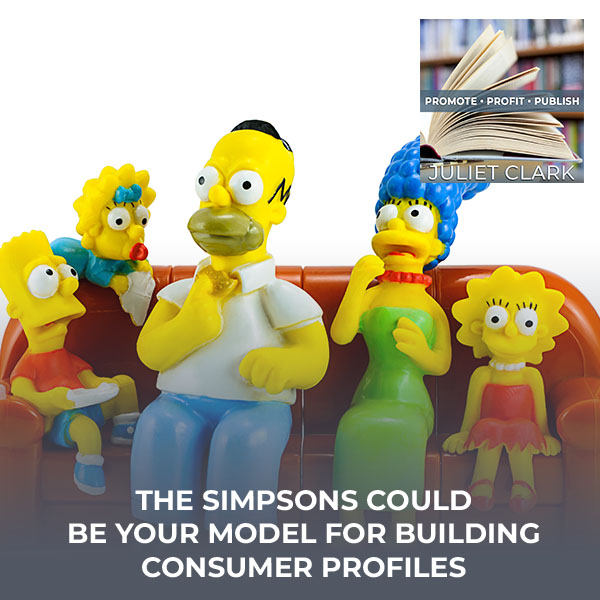


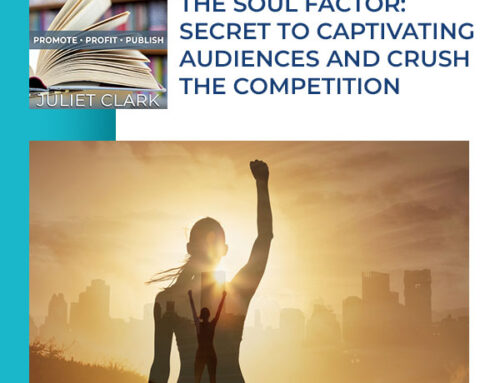
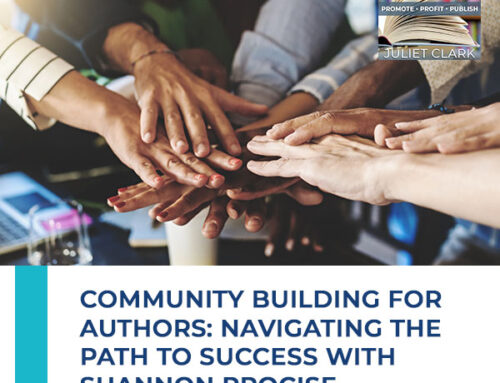
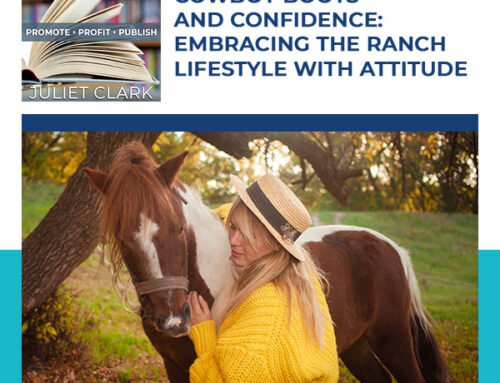


Leave A Comment